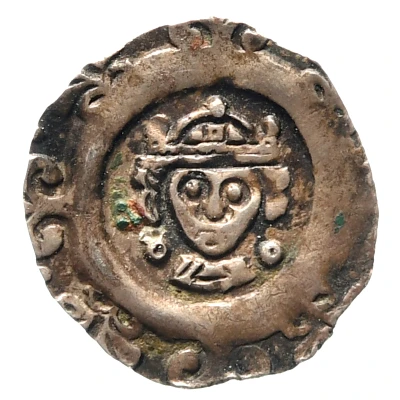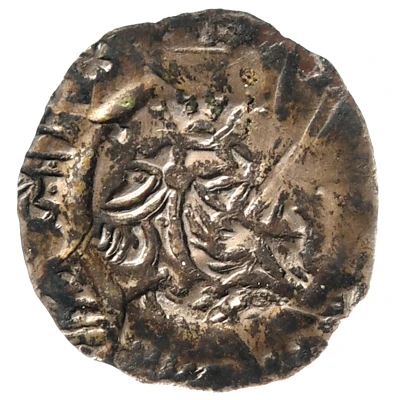Denier Bracteate ND
| Silver | 0.45 g | - |
| Issuer | Holy Roman Empire |
|---|---|
| King | Henry VI (Heinrich VI) (1191-1197) Otto IV (1198-1209) Frederick II (1212-1250) |
| Emperor | Otto IV (1209-1218) |
| Type | Standard circulation coin |
| Years | 1190-1250 |
| Value | 1 Denier (Pfennig) |
| Currency | Denier (843-1385) |
| Composition | Silver |
| Weight | 0.45 g |
| Shape | Round (irregular) |
| Technique | Hammered (bracteate) |
| Demonetized | Yes |
| Updated | 2024-10-05 |
| Numista | N#105881 |
|---|---|
| Rarity index | 100% |
Reverse
Blank.
Interesting fact
One interesting fact about the Standard circulation coin Denier Bracteate ND (1190-1250) from the Holy Roman Empire made of Silver weighing 0.45g is that it was used as a means of exchange during a time of great economic and political change in Europe. The Holy Roman Empire was a powerful and influential state that spanned across modern-day Germany, Austria, and parts of Italy, and its currency was widely used throughout its territories. The Denier Bracteate coin was introduced during the reign of Emperor Frederick II in the early 13th century, and it quickly became a popular form of currency due to its durability and portability. Despite its small size, the coin was made of pure silver, which gave it a high value and made it a sought-after form of currency among merchants and traders. The coin's design featured an image of the emperor on one side and a cross on the other, symbolizing the empire's Christian faith and the emperor's authority. Overall, the Standard circulation coin Denier Bracteate ND (1190-1250) from the Holy Roman Empire made of Silver weighing 0.45g is a fascinating piece of history that provides insight into the economic and political systems of medieval Europe.

